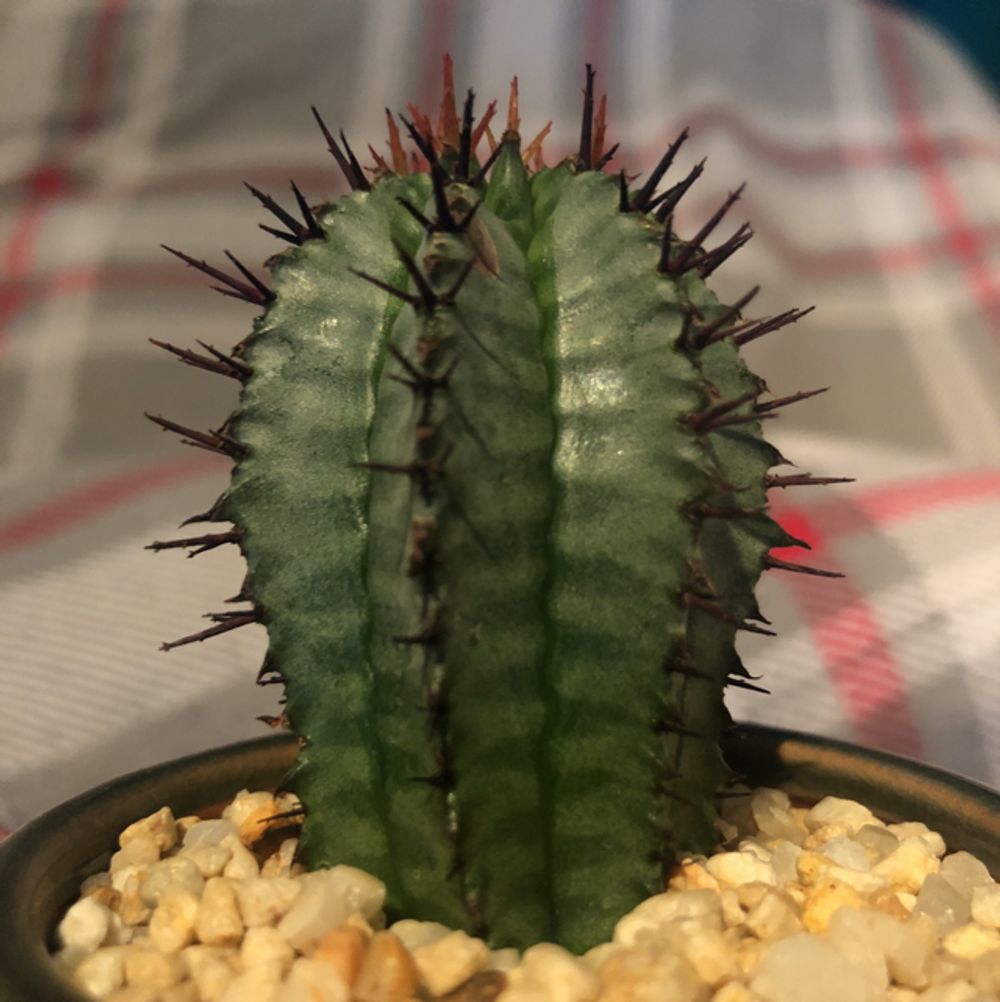Euphorbia monstrose
(Euphorbia monstrose)

Description
Euphorbia monstrose is also know as Euphorbia submammillaris. They are from South Africa and are a mini euphorbia. This is very fun and unique plant it has many little irregular shape balls, it is a clumping plant, it will develop a very unique shape as it grows. Euphorbia is a very large and diverse genus of flowering plants, commonly called spurge, in the spurge family (Euphorbiaceae). "Euphorbia" is sometimes used in ordinary English to collectively refer to all members of Euphorbiaceae (in deference to the type genus), not just to members of the genus. Some euphorbias are commercially widely available, such as poinsettias at Christmas. Some are commonly cultivated as ornamentals, or collected and highly valued for the aesthetic appearance of their unique floral structures, such as the crown of thorns plant (Euphorbia milii). Euphorbias from the deserts of Southern Africa and Madagascar have evolved physical characteristics and forms similar to cacti of North and South America, so they (along with various other kinds of plants) are often incorrectly referred to as "cacti". Some are used as ornamentals in landscaping, because of beautiful or striking overall forms, and drought and heat tolerance. Euphorbias range from tiny annual plants to large and long-lived trees. The genus has over or about 2,000 members, making it one of the largest genera of flowering plants. It also has one of the largest ranges of chromosome counts, along with Rumex and Senecio. Euphorbia antiquorum is the type species for the genus Euphorbia. It was first described by Carl Linnaeus in 1753 in Species Plantarum. The plants share the feature of having a poisonous, milky, white, latex-like sap, and unusual and unique floral structures. The genus may be described by properties of its members' gene sequences, or by the shape and form (morphology) of its heads of flowers. When viewed as a whole, the head of flowers looks like a single flower (a pseudanthium). It has a unique kind of pseudanthium, called a cyathium, where each flower in the head is reduced to its barest essential part needed for sexual reproduction. The individual flowers are either male or female, with the male flowers reduced to only the stamen, and the females to the pistil. These flowers have no sepals, petals, or other parts that are typical of flowers in other kinds of plants. Structures supporting the flower head and beneath have evolved to attract pollinators with nectar, and with shapes and colors that function the way petals and other flower parts do in other flowers. It is the only genus of plants that has all three kinds of photosynthesis, CAM, C3, and C4. The genus can be found all over the world. The forms range from annual plants laying on the ground, to well-developed tall trees. In deserts in Madagascar and southern Africa, convergent evolution has led to cactus-like forms where the plants occupy the same ecological niche as cacti do in deserts of North and South America. The genus is primarily found in the tropical and subtropical regions of Africa and the Americas, but also in temperate zones worldwide. Succulent species originate mostly from Africa, the Americas, and Madagascar. A wide range of insular species can be found. Among laypersons, Euphorbia species are among the most commonly confused plant taxa with cacti, especially the stem succulents. Euphorbias secrete a sticky, milky-white fluid with latex, but cacti do not. Individual flowers of euphorbias are usually tiny and nondescript (although structures around the individual flowers may not be), without petals and sepals, unlike cacti, which often have fantastically showy flowers. Euphorbias from desert habitats with growth forms similar to cacti have thorns, which are different from the spines of cacti. The plants are annual or perennial herbs, woody shrubs, or trees with a caustic, poisonous milky latex. The roots are fine or thick and fleshy or tuberous. Many species are more or less succulent, thorny, or unarmed. The main stem and mostly also the side arms of the succulent species are thick and fleshy, 15–91 cm (6–36 in) tall. The deciduous leaves may be opposite, alternate, or in whorls. In succulent species, the leaves are mostly small and short-lived. The stipules are mostly small, partly transformed into spines or glands, or missing.
Taxonomic tree:







